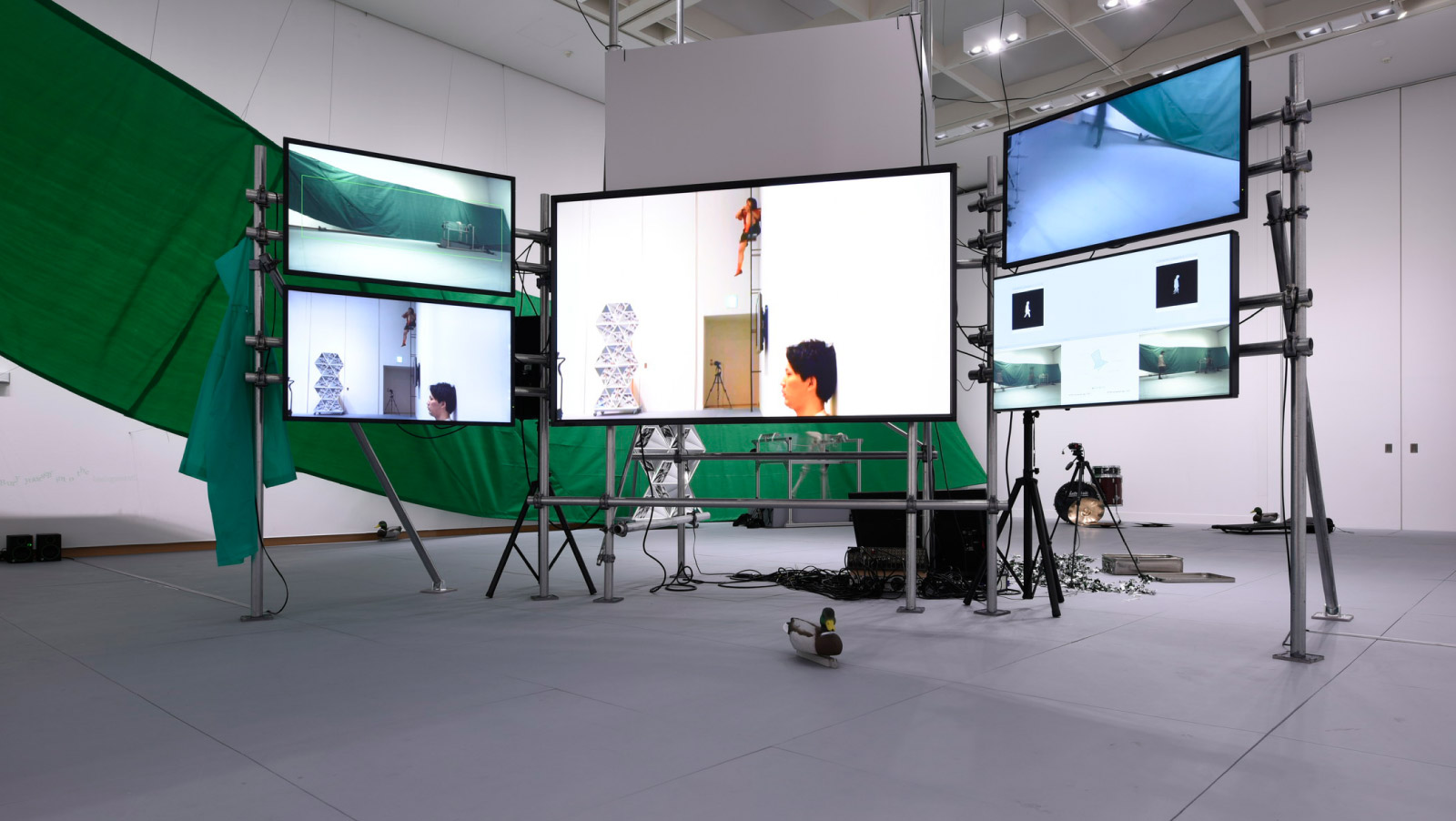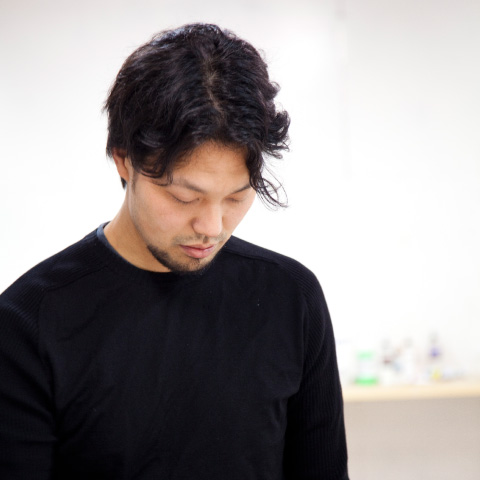
Decoy-walking
Installation view at Aichi Triennale 2019
Decoy-walking, 2019
Photo: Ito Tetsuo
"The Portrait to Umwelts & Programs" in the first room of this exhibition consists of colorful two-dimensional works and distorted photographs of human faces. Displayed individually (and partially upside down), these colorful pictures of faces can be recognized by specific smartphones' built-in "face recognition" functions, whereas the "+" and "-" symbols that accompany each picture indicate whether or not face recognition was successful. The idea for this work came when the artist discovered that some of the drawings he had stored on his computer were automatically categorized as "human figures" by the computer.
On display in the second room is "Decoy-walking," an installation piece that was newly created using "gait recognition" technology by which a computer can recognize characteristic human walking patterns. Several monitors set up at the entrance show documentary footage of a performance that was staged at the venue, as well as charts that indicate what kinds of characteristics the gait identification system was able to detect in walking persons. In the performance, the artist tries out ways of walking that deviate from the recognized patterns, and thereby deceive the system.
Triangular mirrors and aluminum foil arranged in the circumference refer to military deception technologies to amplify or diffuse radar. This is collectively known as decoy, a term that originates from duck decoys (models) used in duck hunting. In this work it is used as a culture icon of sorts representing the deception of machines or living beings. Along with a drum as known from military bands as an element that constructs or destructs sound patterns, these are elements that are used with the aim to disturb the camera and the entire system. By juxtaposing such works, the artist metaphorically highlights the characteristics of technologies and systems for pattern-based recognition.
The installations revolve around technologies for recognizing patterns, and the presence of humans as objects of such technologies, as a central theme. Based on knowledge obtained from technical papers that constitute the background of technology, it seems that the artist explores the limits of recognizability of the world by way of technology.
MURAYAMA Goro
- Born 1983 in Tokyo, Japan
- Based in Tokyo, Japan

Photo: Josui (B.P.B.)
Murayama Goro studied painting at Musashino University and at Tokyo University of the Arts, where he became interested in auto-generative methods of producing images, beginning work on maze or mesh-like paintings according to rules he set for himself. Given his strong interest in autopoiesis (a basic theory of biological systems,) as well as in the biological patterns formed in cellular automaton modeling, it is also characteristic for the supporting media for his works, such as the canvas, to appear to structurally grow outward. He has additionally been inspired by the conditions of perception, such that the viewer ends up discovering phantom images like faces in his art--even the works created autonomously, or systemically in accordance with rules--and is developing pieces that make use of camera facial recognition functions.
Selected Works & Awards
| 2019 | 21st DOMANI: The Art of Tomorrow, The National Art Center, Tokyo, Japan |
| 2018 | Emergence of Order (solo), Daiwa Foundation Japan House, London, UK |
| 2015 | Fantasy in prison (solo), Koganei Art Spot Chateau 2F, Tokyo, Japan |
| 2010 | shiseido art egg 4, Goro Murayama Exhibition: The re-enchantment of painting system (solo), Shiseido Gallery, Tokyo, Japan |
Map
Aichi Prefectural Museum of Art (10F)
Address
1-13-2 Higashisakura,Higashi-ku, Nagoya
461-8525 JAPAN
Open
(Fri -20:00)
Admission until
30 minutes
before closing
Closed
Barrier free
Access
・5 minutes on foot from Sakae-Machi Station on the Meitetsu Seto Line.